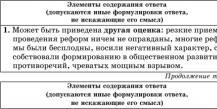How to develop your voice. How to put your own voice at home
Over the past fifteen to twenty years, family song culture has almost disappeared in Russia, and this is a very serious loss.
Previously, the song sounded constantly: adults sang, gathering at one table; mums sang, laying the kids to sleep.
People sang just like that: going camping, digging potatoes, doing spring cleaning.
Nevertheless, song traditions are gradually returning.
Today, a huge number of people dream of not just singing, but doing it right, beautifully. Not everyone has the opportunity to do vocals with a professional teacher. In this case, try to learn to sing at home.
How to learn to sing at home: developing a breathing apparatus
Karaoke is a real find for lovers of singing. Many sing at home, in karaoke clubs, with friends and just like that, for themselves. There are talented people to whom the voice is given by nature, and then they may well find themselves in the vocalist profession.
How to learn to sing at home? First of all, to understand that it will not work easily and quickly. If you want to achieve a really good result, will have to work in three directions:
Develop proper breathing;
Learn to articulate correctly;
Choose the right repertoire.
So how to breathe correctly and why is it important for those who want to learn to sing? The problem is that many lovers sing well, but they do not have the volume and power of sound. This is because the layman exhales the air right away without holding it. The air ends, the muscles relax - the sound is lost.
The biggest mistake is to breathe air into the upper lungs.. With such shallow breathing, shoulders and collarbones rise, and a neck and ligament clamp occurs. A beautiful “flight” sound will not work.
How to understand what is proper breathing? There is a very simple way. You need to lie down, relax and imagine yourself sleeping. During sleep, a person breathes most physiologically. Air is drawn into the lower parts of the lungs. This can be understood by the fact that a sleeping person does not have a chest rising, but a stomach.
That's right, with your stomach, and you need to learn how to breathe a person who wants to learn how to sing at home, without a teacher. Such breathing is not accidentally called diaphragmatic. Air-filled lungs in the lower part expand and begin to put pressure on the diaphragm. A good breathing support is created, without which to get a strong, clear sound will not work. The diaphragm is the secret of proper breathing, successful vocal training.
To check whether you breathe correctly, stand against the wall, straighten your shoulders and take a breath, putting your hand to your stomach or (for clarity), any elongated object: a comb, a small umbrella. If you feel that the hand went forward or you see the belly “pushing” the object, everything is in order: it is this, breathing in the stomach, or the diaphragm.
Now you need to train muscle muscles with special exercises. The more you train, the faster and better you will learn to sing. In fact, the stronger and longer the sound is pulled, the stronger the tension in the muscles should be. This will help to sing the whole musical phrase, or even two, without tension, beautifully and completely.
If you inhale the air and immediately exhale, then the end of the phrases simply “spreads out” or does not sound at all. That is why an amateur singer often does not “reach” the line to the end. To avoid a common mistake, one must learn to hold the respiratory support constantly.
The usual swing of the press provides good help, but there are also professional exercises.
Exhale the air as much as possible, then, without gaining air into the chest, breathe “press”, inhaling and exhaling with effort. Such an exercise is designed specifically to develop the diaphragm, so you can’t breathe when singing! Inhale is done through the nose. On inhalation, the abdomen retracts, on exhalation it protrudes slightly. The rate of inhalation-exhalation gradually, as the diaphragm strengthens, needs to be increased.
Classical academic diaphragm exercise: simulate a shout. Imagine that you need to hail a person who is at a distant distance. Shout “hey!”, Feeling the diaphragm tighten. Do 8 to 10 of these “shouts.”
How to breathe when singing? Nose air, filling the lower part of the lungs as much as possible. The breath should be silent, free, natural. Breast or clavicular breathing is unacceptable: you simply begin to suffocate when singing, overload the ligaments. This is fraught with loss of voice, hoarseness, sore throat.
You need to train daily. This is the main condition for success: the respiratory and articulatory apparatus must receive a constant load in order to be in good shape and maintain strength. A well-developed diaphragm is elastic, strong. Thanks to her, you can gradually develop the technique and learn to sing well.
How to learn to sing at home: important exercises
Daily exercises should necessarily include exercises to strengthen the ligaments and articulation. The initial task is to learn to get rid of tension in the throat, to relax the ligaments. You will need to master the “vocal mask” - this is a special facial expression that makes it easier, stronger, more beautiful to sing sounds.
Exercise "Wide Throat":
Make a “vocal mask”: smile slightly, feeling tension in the cheekbones;
Pull out the tongue while retaining the "smile mask." To make it easier, you can hold your cheeks with your fingers;
Keeping such facial expressions, breathe dog-like, at a different pace. It is important to feel tension in the press, chill and relaxation in the neck. You can help yourself by putting a pencil, sushi stick, pen on your tongue;
Keeping the position of the tongue and cheeks, lower the jaw down as low as possible, continue breathing;
Leave the muscles of the face in the accepted position and utter the sound “a”, pushing it out with the stomach.
In this position, the ligaments rest.
The most important quality of correct singing is proper articulation, that is, a clear pronunciation of vowels and consonants.
Articulation Exercise.
Include the original song. Well, if you remember the words as a keepsake. If not, you need to have text before your eyes.
Take a thick marker or felt-tip pen, clamp between the teeth. The main task is to hold the felt-tip pen while pronouncing the words. Keep your upper teeth hanging over the felt-tip pen: this will make it easier to sing.
First you don’t have to try to sing, it’s important to say the words. The tongue at this moment should not be under or above the felt-tip pen. When pronouncing, he will constantly come across a barrier and get tired. This is serious muscle training.
Having done the exercise two to three times, you can proceed to singing the text. Make three repetitions of singing.
Now you can sing without a felt-tip pen. The bottom line is that the articulatory apparatus remembers the position of the muscles of the face, in which it will be easy for him to sing. Thus, the exercise allows not only to improve articulation, but also to get used to the “vocal mask”.
Sure, do not ignore tongue twisters - An indispensable element in the development of clear diction for all artists. When speaking tongue twisters, pay attention to the endings of words: they should not be “swallowed”, the phrase should sound cleanly from beginning to end.
Great for simultaneous training of the respiratory organs, vocal cords, diaphragm, some exercises of respiratory gymnastics according to Strelnikova. A lot of singers are engaged in this system, why not beginner vocalists do this too? The basis of this paradoxical system is a special nose inhalation. It should be sharp, short and noisy. But the exhalation should be completely invisible, easy, it will be filled with the mouth. It is necessary to focus attention on inspiration.
Exercise Pump.
Make a half-bow with your hands free. The back is rounded, legs shoulder-width apart.
To make the slope stronger, as if you are really working with a pump, and at the same time inhale sharply.
Take an initial position with a quiet exhale.
Repeat. One exercise cycle - eight breaths. Complete exercise is 12 cycles.
Hold Shoulder Exercise aims to expand the lower lung, which is very important for singers. When inhaling, the chest should be pinched, and all the air will rush down.
Place your arms parallel to the floor, bending at the elbows. One hand is on top of the other.
Sharply, at the same time as inhaling, throw your hands towards each other, hugging yourself by the shoulders and at the same time pinching your chest.
On exhalation, loosen the compression, return to its original position.
The number of repetitions is the same.
Another great exercise to do is the same as the “Pump”. However, hands should be placed on the stomach. Simultaneously with the tilt, press on the press and pronounce the syllables with any consonants and vowels “and”, “u”, “o”, “e”. It will turn out very similar to the classic chant "mi-mu-me-mo", "ri-ru-re-ro", etc. Exercise helps develop respiratory support and deliver voice.
How to learn to sing at home: choose a repertoire
It's time to pick the right repertoire. It is not as easy as it may seem. It is important to catch the tonality (pitch of the voice) at which the ligaments will work as comfortably as possible, without tension. If the song is “yours”, the sound will flow freely, without clamps.
Try singing individual sounds in unison (monotonous) to the selected song first. This means that two sounds of the same pitch will sound simultaneously: your voice and music. If you have a musical instrument or tuning fork at home, making the sound clear can be easier. Pick up a sound with your voice so that it matches, merges with the instrument or tuning fork. For starters, you can do this without opening your lips, that is, simply mumble.
If there are recordings of your favorite song performed by a professional artist, and if the tone suits you, start singing. Try to copy intonations, facial expressions, singer movements - this will help to master the technique of singing. Ideally, your voice and the voice of the artist should merge completely.
The next stage is to try to sing karaoke or "backing track" of the selected song. Be sure to record your performance and listen to it. When a man sings, he does not hear himself. Analysis of the record will allow you to see the errors and work them out. For example, if you are fake somewhere, that is, you do not fall into tonality, you need to work out this fragment.
Learning to sing is very helpful for children's songs. Usually they have a narrow range, a pleasant and clear melody. When the children's repertoire is mastered, you can switch to popular music, romances, folk songs that you like.
If you know a foreign language - great. Songs by foreign artists will significantly expand your repertoire. If you don’t know, then it’s good: thanks to music you can learn a language. The main thing is that the work should be technically uncomplicated, sound within one octave (that is, there would not be too much difference between low and high sounds) and have a simple text.
Ask benevolent relatives or friends with a musical ear to listen to your singing. Do not take hostility with criticism. In the end, you are only learning to sing, so each comment will only benefit.
Not every one of us is born with a beautiful voice. Sometimes its timbre and melody are not too pleasant to hear, but because many want to achieve a more melodic sound. The simplest solution to this problem is to contact a specialist. But this does not suit everyone. Some people ask themselves whether at home with the aim of straightening their diction a bit, developing vocal chords or starting to engage in amateur singing. For these simple tasks, not related to a professional career, there are many useful exercises that allow you to adjust the purity and strength of the voice.
Breath
The basis of voice production is breathing. It affects its expressiveness and power. Having mastered, you can learn to manage your larynx. People who do not know how to do this try to sing, overstressing, thereby causing injury to themselves. Therefore, before you put your voice on your own, you need to master a small set of simple and very useful exercises that will protect you from damage to the larynx and teach you rhythmic and proper breathing.
1. The first exercise is performed using a conventional plastic bag. You need to try to keep it in the air with your own breath. It should look like the wind is playing a kite.
2. For another exercise you will need a bird feather. It is important to control the force of exhalation. At first it is advisable to blow so that the fluffs flutter only along the edges, and then breathing must be strengthened to achieve their full mobility.

3. The third exercise involves working with a vowel. To do this, you need to go to the mirror and sing in turn five sounds: “and”, “e”, “a”, “o” and “u”. All vowels are exhaled. A similar task demonstrates how to put your own voice at home competently and quickly.
Purity
This characteristic is a very important element in setting a beautiful voice. Many believe that it is she who plays a much more significant role in this matter than strength. For training, you must try to pronounce all the words clearly and slowly, clearly pronouncing each sound. Moreover, no matter what the voice is put for - for singing or beautiful speech - purity is necessary in both cases.
The following tasks will tell you how to put a voice on your own at home. Exercises for clean breathing:
1. This technique suggests turning to classical chants. It’s useful to pick up a sounding note. You can use a piano or guitar melody - these are the best accompaniments used in most music schools.

2. For the next task, you will need to close your mouth and, without opening it, try to yawn, raising the sky as much as possible. It is necessary to remember these sensations and the location of the sky. Then, without opening your mouth, you need to sing a few simple notes, for example, do-re-mi. It is important to pronounce sounds smoothly and quietly, and the voice should resemble a soothing melody.
Force
After staging breathing and exercises to improve the purity of the voice, you can proceed to training the timbre. Working on strength will help put your voice at home and learn how to control low and high sounds. The main thing is to carry out tasks, avoiding overstrain of the ligaments, otherwise in the future you can get damage that will lead to irreversible consequences.
1. During this exercise you need to apply light blows to your chest, as Tarzan did in the cartoon, and at the same time sing a set of any vowels. It is important to pronounce them quite loudly, you can even scream, but do not overdo it with blows so as not to inflict injury on yourself.

What is harmful?
1. Limit the consumption of mustard, vinegar, pepper, or horseradish, as spicy ingredients negatively affect the sound.
2. It is extremely important to avoid any alcoholic beverages: alcohol provokes an increased rush of blood to the larynx, this causes redness and swelling of the mucous membrane. Also, people who drink alcohol often suffer from regular hoarseness.
3. If you decide to follow all the recommendations that answer the question "how to put a voice on your own at home", you must definitely exclude the use of tobacco products. The voice of smokers loses its softness, and the situation is aggravated by a constant cough in the morning. That's because tobacco smoke provokes catarrh of the upper respiratory tract. Very often, the lungs and bronchi are involved in this process.
What will help with voice problems?
2. During dry mouth or throat, it is best to drink a glass of mineral or chilled boiled water. It is recommended in such cases to avoid the use of hot drinks.
3. If you are concerned about dryness and should be instilled in the nose and mouth 6 drops of olive oil or gargle with an alkaline solution.

4. For inflammation of the pharynx or larynx, it is necessary to consult a specialist. In such cases, most likely, doctors will prescribe an inhalation course. It is most convenient to use pocket inhalers, which can be purchased at any pharmacy. It is not recommended to go out immediately after the procedures.
Before you put your voice at home for singing, it is important to take care of your posture. You need to keep your back steady. If you do not plan to play a musical instrument, it is best to sing while standing, as the sitting position crumbles the larynx somewhat, not allowing you to fully reveal your voice capabilities. If you need to sit down, it is best to firmly rest your feet on the floor. Do not raise one leg above the other or throw them at each other.

Conclusion
Today we introduced you to the basic recommendations on how to put a voice on your own at home, without making much effort. No need to deal with this watch, because in this matter the regularity of classes is much more important than their duration. In addition, overly long singing can disrupt non-trained vocal chords, and you will have to forget about your favorite pastime for an indefinite period. Particular attention should be paid to the technique of exercises and their clarity, because this is the only way to improve your voice and make it beautiful and attractive. In addition to the classes themselves, it is necessary to observe all the instructions regarding harmful and beneficial factors. It is recommended that you switch to a healthy diet and eliminate unwanted foods from your diet, as well as cigarettes and alcohol. Compliance with these simple rules will demonstrate how to put your own voice quickly and easily.
The expression "soul sings" has quite real justification - do you remember your feelings when everything in life goes well, the world seems wonderful, and you want to somehow express this indescribable gamut of emotions and feelings into the outside world? Someone expresses emotions with a dance, someone draws, and some want to sing, so that the whole palette of emotions is reflected in the voice. But, unfortunately, not everyone has been given a “natural voice delivered” from birth. How to put a voice on your own so that it sounds beautifully, powerfully and emotionally?
Where to begin? Bit of theoryEqual correct breathing + ligament closure + resonator operation - this is the formula that provides a clean and beautiful sound. For good singing, good hearing is also necessary, but if we talk exclusively about sound, then these components will be enough.
Breathing is the beginning of the beginnings. Proper breathing has a healthy effect on the whole body, helps to get rid of psychological clamps and blocks and guarantees a beautiful sound when singing - this is called "support". Ribs and a diaphragm are involved in such breathing, and it is it that increases the power of sound production and stabilizes sound.
Resonators are a kind of sound amplifiers that allow you to add volume and depth to your voice, as well as develop your own unique timbre. Resonators are divided into upper and lower, while the upper (everything that is above the ligaments, including the parietal bone and nasal cavities) are responsible for the purity and sonorousness of the voice, and the lower (chest) give it strength. And for the formation of the support, and to increase the power of the resonators, there are special exercises that can be done independently, without the participation of a teacher.
How to put a voice on your own at home?
Stock up with patience and perseverance - the process of voice-over is quite long and far from the easiest. You need to perform the exercises constantly, without missing workouts and carefully working out your mistakes. If you have trouble concentrating or are prone to laziness, but want to learn how to sing, better find a teacher, because he will be able to control you and will track your mistakes, and you will only have to try. Well, if you are determined to learn to sing on your own, start right now, the sooner you start, the better the result.
Breathing exercises
All exercises must be performed while standing or sitting, with a straight back and a relaxed body, so that the sound has no additional obstacles, and breathing should be exclusively through the nose. Do not inhale too much - as you inhale, imagine that you are trying to smell the flower, and as you exhale, blow out the candle. Keep this balance.
- Put your hands just above the abdomen and press on this place, at the same time pushing the air through the nose to the end. Did you feel resistance? This is the diaphragm that needs to be developed.
- Stand in front of the mirror. Take a deep breath through your nose, and as you exhale, repeatedly say the letters I, E, A, O, U as long as one breath is enough. In the letter U, the air must be completely pushed out of the lungs, slightly pulling in the area of \u200b\u200bthe diaphragm.
- With closed lips and loose teeth, utter the sound “MMM” - first quietly and very neatly, then a little louder and finally forcefully squeezing the sound out with a diaphragm with the highest possible volume. This exercise allows you to build voice power.
- Scold as in childhood when you portrayed a tiger. The open sonorous sound of "PPP" allows you to relax your ligaments and set up communication with the head resonators. It is equally useful to pronounce “growling” words with an emphasis on the letter P: wing, fence, rainbow, etc.
- The last exercise is called "Tarzan's cry" - the actions are the same as in the first exercise, but when extracting sounds you need to quickly beat yourself with your fists on the chest, creating a characteristic vibration. After the exercise, mucus may appear - do not be afraid and cough up, your lungs and throat are cleaned. This exercise is best done in the morning, as it has an energizing and energizing effect.
- Inhale briefly through the nose, and as you exhale, utter the sound “M” with interrogative intonation, as if you were asking something again. Exercise is effective when it is possible to direct the sound to the front of the palate and a tickle appears in the lips and nose.
- Take a deep breath through your nose, and as you exhale, say “bomm”, “donn”, etc. Vowels can be changed at your discretion, the main thing is that the same vibration of the lips and nose appears as in the first exercise.
- Such an exercise is well suited for the lower resonators: stand straight, put your hands on your chest and, as you exhale, lean forward slightly and say the sound “U” or “O”. Did you feel the vibration in your hands? So the exercise is done correctly. At the same time, try to combine the supply of sound to both the palate and the chest.
Articulation is very important for singing - it will help the sound to resonate properly, and relieve listeners from the sensation of porridge in your mouth. To improve articulation, tongue twisters and various exercises are also suitable to give mobility to the lips, tongue and jaw.
- Yawn, opening your mouth as much as possible, and then fold your lips into a tube, as for a kiss.
- To increase the mobility of the tongue, quickly pronounce the sound “TD”, while pushing the air. This sound is similar to the sound a horse gallops on.
- The jaw should never be clamped - for this, knock your teeth in a chill, controlling your facial expression. The muscles should be completely relaxed, and no extraneous expressions should appear on the face.
And it's all?
All of these exercises are just a small part of voice work. If you do not have the initial skills, you will have to independently learn the basics of solfeggio for the development of hearing. And if you think that only the singers need a voice, you are fundamentally wrong. The voice is designed to help express emotions in public speaking, during a conversation, etc., and a true, free and set voice will help to attract attention and achieve your goals. The main thing is to work on your voice, do not be lazy and over time the result will justify all your desires.
What to do for those whose voice is naturally weak or insecure? You can take advantage of powerful exercises for voice development, which are recommended by expert Felix Alekseevich Kuzmin, professor at the Moscow State Academy of Press.
You can develop your voice through these exercises, just as you develop muscles through physical education. Your voice will become lower and more harmonious, as far as necessary, its range will expand, the pronunciation will become clearer, modulations more expressive, and expressiveness more convincing. It is best to perform these exercises regularly, and in the morning, it will charge you with energy for the whole day.
As a result of this training, not only your voice, but also your thoughts become calmer and deeper. The deeper and lower the voice, the deeper it settles in the mind, the more the pronounced words make an impression. Due to this, your personal authority is strengthened.
1. Stand in front of the mirror. Breathe out, then breathe in and utter each sound until you have enough breath. So inhale and start:
iiiiiiiiii
eeeeeeeeeee
aaaaaaaaaa
oooooooooooo
ooooooo
This sequence is not random, you start with the sound of the highest frequency - “and”. If you put your palm on your head, you will feel a slight vibration of the skin. This is evidence of more intense circulation. Pronouncing the sound “e” activates the neck and throat, you can feel it by putting your hands to your neck.
Pronouncing the sound “a” has a beneficial effect on the chest area. When pronouncing the sound “o”, the blood supply to the heart increases, and exercise with the sound “y” has a positive effect on the lower abdomen. Speak all sounds slowly one after another three times. Do you want your voice to be lower and deeper? Then say the sound “y” many times during the day.
2. Now you need to activate the chest and abdomen, for this you need to pronounce the sound "m" with your mouth closed. Exercise sound "m" do three times. Once it’s very quiet, the second time it is louder and the third time it is as loud as possible so that the vocal cords are strained. Putting your palm on your stomach, you will feel a strong vibration.
Particular attention should be paid to the sound "p", since it helps to improve pronunciation and gives the voice strength and energy. In order to relax the tongue, carry out preliminary preparation: lift the tip of the tongue to the sky behind the front upper teeth and “growl” like a tractor.
So, exhale, then inhale and start to “growl”: “rrrr”. After that, pronounce the following words expressively and emotionally with an accentuated “p”: role, steering wheel, ring, ruble, rhythm, rice, carpet, cook, fence, cheese, goods, grass, wing, lilac, frost, etc.
3. In conclusion, do the "Tarzan exercise", which is the best prevention against colds and myocardial infarction. Stand straight, exhale, then take a deep breath. Fist your hands together. Pronounce sounds from the first exercise loudly, starting with the sound “and”, while pounding yourself on the chest with your fists, as Tarzan did in the famous film. Then continue by pronouncing the sound “e” and so on.
At the end of the exercise, you will notice how your bronchi are cleared of mucus, how your breathing becomes free, how you are energized. Thoroughly clear your throat, get rid of everything unnecessary! This exercise should be performed only in the morning, as it has an exciting and activating effect.
After several weeks of training, compare your current voice with the previous one, it is best to do this by recording your voice on a tape recorder in advance of training. You will see that your voice has changed markedly. Now he has gained more suggestive power, which means that the charismatic radiation emanating from you has become more intense, you have begun to speak more convincingly and have a stronger effect on others.
With the help of breathing exercises and exercises for developing your voice, you change not only your voice, but also the energy emanating from you and, in general, your personality as a whole.
Most people mistakenly assume that if by nature they don’t have singing talent, then you don’t need to try to learn. But, fortunately, there are people who, contrary to all, realized that by training and practice, great results can be achieved. They not only understood this, but also shared their discoveries. Therefore, now there are many effective methods to put a pretty good voice from almost nothing. The question of how to learn to sing at home, if there is no voice, gets more and more good answers. So what to do to improve your vocal skills? How to defeat a bear that stepped on your ear?
Voice over exercises

What pose is best to sleep in

What most people regret at the end of life

How to behave if you are surrounded by louts

The very first and most important thing is the voice. Because, if nature did not reward singing beauty, then it must be created, honed at least at the initial stage. We are talking about special exercises that many vocalists do, both little-known and very famous. After all, many understand that even the stars of the world of show business sometimes far from talent paved their way into the music world. A whole crowd of modern singers and singers came to the stage completely without a voice, but through the correct approach to their voice and constant efforts they still learned to sing well.
So, exercises are the easiest way to learn to sing at home, if there is no voice. Many can remember how at school in physical education classes they posed in a pose when their legs were spread shoulder width apart and their hands were held along the torso. If from this position you gently lean forward, with straight arms pointing down, almost reaching the floor with your fingertips, you can perfectly develop the respiratory system. And this in voice-over is the main criterion. Just remember that when you bend you must definitely take an active breath with your nose, and when you straighten up, you need a silent, passive exhalation with your mouth. This exercise not only helps put your voice, but also defeats the pain in the liver and heart, as well as asthma attacks. Many vocalists do such exercises even when they have an innate talent for singing. The speed of tilting and straightening should be the same as the speed of the drill step. You need to do 12 sets of 8 slopes.
There is another cool exercise, the essence of which is to hug your own shoulders. Only hands should be parallel to each other, they should never be crossed. And with every sharp hug, you should take the same sharp breath with your nose. Exhalation, of course, is done along with scattering the arms to the sides. If you do these exercises correctly, while not changing the order of the hands, you can achieve a delightful tone for all the organs that take part in the formation of sounds. Of course, each activity has its own limitations, and if it is difficult for you to do it, or it causes pain - it is better to find an alternative.

What happens if you stop washing your hair often

What pose is best to sleep in

13 signs that you are wasting your life but don’t want to admit it

After you have prepared your body for singing, you can start chanting. Now there are many different tips, but it is better to deal with the old "grandfather" method, which you can try to learn from old music teachers. Well, or you can try to remember from elementary school. In general, to learn to sing at home, if there is no voice, sing the sounds of O, E, U, I, combining them with different vowels.
The best options that help cleanse and maximize your voice:
- ri-ru-re-ro;
- gi-gu-ge-go;
- cree-crus-cre-cro;
- shi-shu-she-sho;
- li-lu-le-lo.
But dwell only on these options. A couple of classes and these chants will become a habit. Try to make some changes in the sound and voice, change the timbre, and then the exercises will benefit.
Choosing the right training method is the key to success

After your steps in developing and staging a voice that you can do on your own, we advise you to turn to various techniques. Of course, you don’t have to study with a teacher or attend music courses, because all that you may need is on the Internet. In most of the techniques developed by eminent experts in the field of vocals and music, there are exercises called "eights". Its essence is that you need to count 10-15 times out loud to eight, and before holding your breath. If you find this exercise in a singing course, then this course is most likely adequate and effective. Which means you can learn to sing from it.
Naturally, it is better to deal with a professional. Oh, he will not miss anything, he will be able to pull out at least some semblance of vocal data from a person. And especially if the student really wants to sing. But since most people are shy - they need to study alone. And with due effort, it almost always works. And if you want to know more information on this topic, you can read the article:. Also at home, you can do many other things, for example, or







